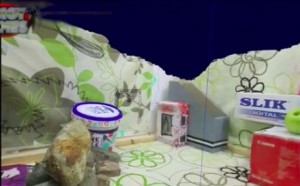 In August last year I posted the last of a few articles on promising new graphics technology called Unlimited Detail. As I posted there, the team were going to ground to work on getting the technology to a stage where they have something even more substantive to show off.
In August last year I posted the last of a few articles on promising new graphics technology called Unlimited Detail. As I posted there, the team were going to ground to work on getting the technology to a stage where they have something even more substantive to show off.
That may be a little while off yet, but xbigygames.com has an interesting piece on how Euclideon are doing. A snippet:
As mentioned when Euclideon was first revealed, this technology is something they plan to utilise not only for video games but also scientific research. Supposedly there will be “some Euclideon products released in non-games related industries over the next few months”. “There turned out to be a lot of demand for our capabilities across quite a few industries, so we have tried to put that demand in order and address each area one at a time. As soon as we have revenue coming in, we can expand our team into different departments to deal with each industry,” Dell tells us.
“I think it’s fair to say that people are starting to accept that the future of 3D graphics is atomic,” he finally points out. “Polygons will still be around a bit longer as an editing tool, but I don’t know how much longer they will remain for visualisation. So many games today have polygons that are so small that they are only a few pixels in size. When polygons become smaller than the 3 corner points that make them, there is no point in treating them like triangles anymore and it makes sense to use atoms instead.”
On the question, when we will get our next look at Euclideon powered gaming, all Dell responds is, “Well there is soooooo much I’d love to say about that, but I’m afraid that I’m sworn to silence at this point in time. My apologies, but I think you’ll find it worth the wait.”
So things are still progressing and we should start to see some implementations of the tech before the end of the year by the sound of it.
Thanks to Phillip Street for the heads-up!


 http://www.slactions.org/
http://www.slactions.org/

Recent Comments